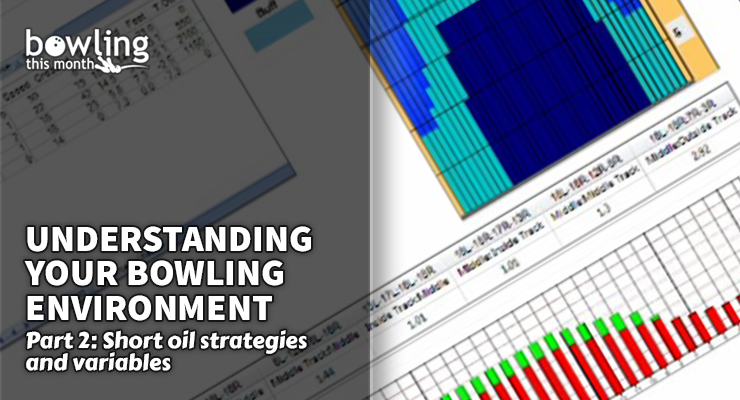In the first article of this series, we discussed the various elements that make up a lane pattern and how each variable can affect ball motion. While length is not necessarily the most important factor, it’s what most people look at first when deciding on strategy and ball selection. Speaking from experience, in the case of national teams, sometimes the pattern choice can affect roster selection as well, particularly when it comes to shorter and longer patterns which generally demand specific and sometimes opposite skills.
Even though we also need to consider the volume, ratio, taper, and type of oil being used, shorter patterns usually offer the most specific and obvious strategy choices, so they’re the best place to start as we dive headlong into this series. We’ll start by getting a few definitions and general pieces of information out of the way.
Defining short patterns
First, as mentioned in the opening article, higher ratio patterns like house shots don’t generally need to be classified by length. As a result, with short patterns, and for the rest of this series, the assumption is that the pattern is more challenging than a typical house shot, with a maximum ratio of 5:1. Remember that most professional patterns are at a 3:1 ratio or less, but 5:1 can still be quite challenging for competitive league bowlers, and this ratio is where the strategic principles to follow really start to apply.
Short patterns are generally classified as 37 feet or less. We very rarely see anything shorter than 32 feet, such as the PBA Wolf pattern when it was first introduced. Slightly longer patterns can sometimes feel shorter because of the other variables we’ve mentioned, but the vast majority fall in the range of 34 to 37 feet. All of them are designed with an outside breakpoint in mind, which is where we begin from a strategy point of view.
Short pattern strategy tips
Before we dive into the variables that will affect your strategy, let’s discuss some general tips related to short patterns. Once the general game plan is established, we can then tweak it based on the additional information we can get about a pattern and the environment.
Lane play
Given the common range of short pattern lengths and using the “Rule of 31” as a guide for where the ball should exit the pattern, we know that our breakpoint on shorter patterns will almost always be outside of the five board. We usually want to achieve this breakpoint with a much straighter angle through the front of ...
This article is only available to Bowling This Month subscribers. Click below to get instant access to this article and all of our other premium instructional content.
Subscribe to Bowling This Month
Already a Bowling This Month subscriber? Click here to log in.
